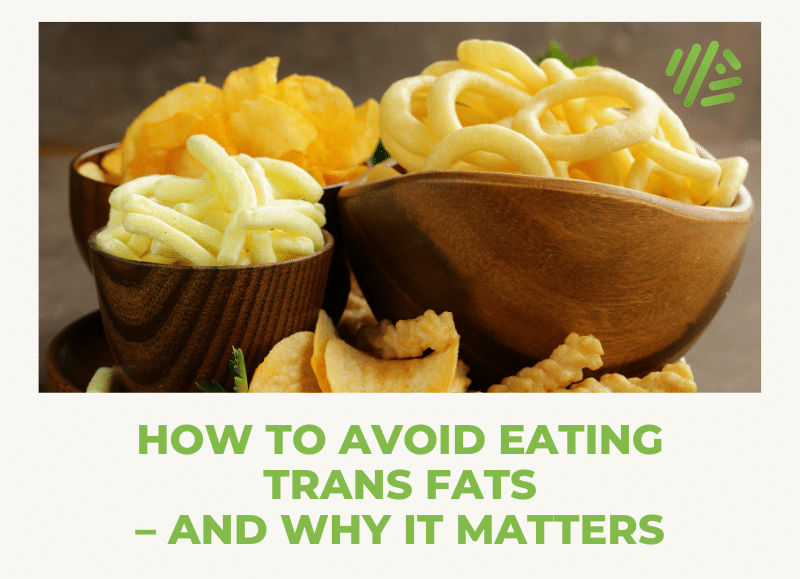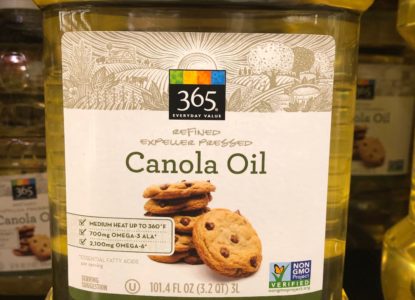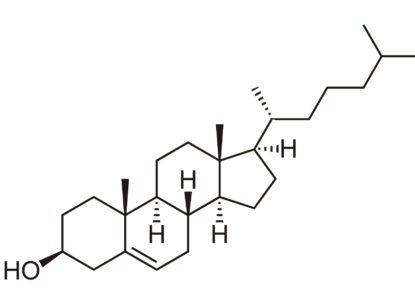How to Avoid High Trans Fat Foods – and Why it Matters
Article at a Glance
Despite government regulation banning trans fats in 2020, hidden trans fat may still be present in these foods:
-
- Hydrogenated oils
-
- Ready-made frosting
-
- Potato chips and corn chips (and even ‘healthy’ kale chips and bean chips)
-
- Packaged or microwave popcorn
-
- Cookie dough
-
- Refrigerator dough products such as canned biscuits and cinnamon rolls
-
- Frozen pizza crusts
-
- Non-dairy coffee creamers
-
- Non-dairy margarines and spreads
Genes Mentioned

Contents
Trans fats are a particularly dangerous type of fat that are great at preserving the shelf life of processed foods, but terrible for your cardiovascular health. Sadly, though, the Food and Drug Administration still hasn’t forced manufacturers to remove these dangerous artificial fats from our food. In fact, as we will learn in this post, labeling guidelines make it easy to hide small amounts of trans fat in foods some of us consider healthy, like vegetable oils.
There is a mountain of evidence demonstrating how cutting out trans fats can massively reduce your risk of a heart attack, stroke, or other potentially fatal health issues.
So, let’s look at how to avoid eating trans fats and why their replacements might not be as healthy as you’d like.
FDA position on trans fats
The World Health Organization (WHO) has called for the elimination of industrially produced trans fats from the global food supply by 2023, warning that trans fats kill up to half a million people globally each year. 1 So, why aren’t trans fats banned in the US?
To be fair, the FDA isn’t entirely negligent when it comes to trans fats, but it would sure be nice if they sped up their enforcement. Back in 2006, the FDA brought in rules about labelling, and in 2018 they passed regulation to stop manufacturers adding trans fats to food. So, foods sold in 2019 should be trans fat-free, right? Not quite.
Food manufacturers have been prohibited from adding trans fats to foods since 2018, but this doesn’t mean there aren’t foods containing trans fats on grocery store shelves. Why? Because the FDA extended the compliance deadline to January 1st, 2020, for foods already on the market. This was to allow those foods manufactured before the 2018 deadline to work through the food distribution system. 2
As of January 2020, the FDA will have effectively banned artificial trans fats in foods. But don’t rest easy just yet. Food manufacturers can still seek FDA permission to use partially hydrogenated oils in foods if they cannot find a way to reformulate products. 3 And, of course, there may still be some foods hanging around that were manufactured before 2018 and have not been taken off shelves just yet.
Wherever you’re getting your food, it’s good practice to check nutrition and ingredients panels.
It’s also essential to know how to check nutrition labels properly. Unfortunately, this isn’t as simple as just looking for a ‘0’ next to trans fats on the nutrition label.
How to Read nutrition labels to spot trans fats
Labelling guidelines allow manufacturers to put a ‘0’ in the column next to trans fats if a food contains less than 0.5 grams per serving. It’s easy to see how, then, the average American still consumes 1.3 grams of artificial trans fats every day, according to the US Centers for Disease Control and Prevention.
The labeling guidelines rules allow vegetable and seed oil manufacturers to claim their products are free of trans fats, when in fact they often contain small amounts. Consider this quote from an excellent Harvard Health article on the subject:
Bottles of canola, soybean, and corn oil in the supermarket proudly proclaim “Contains zero grams of trans-fat.” Read the fine print that states zero grams of trans-fat per serving, which is only one tablespoon, or about 14 grams of oil. The FDA allows any component that is less than 0.5 grams per serving to be listed as zero grams! Despite this claim, virtually all vegetable oils sold in the supermarket contain small amounts (less than 5%) of trans-fat.
Without even knowing it, you could easily consume 1.3 grams of trans fats in just three servings of foods that have a ‘0’ for trans fats on the label but that actually contain almost half a gram of trans fats per serving. 4 Factor in how most serving sizes are actually far below what the average person eats and you’ve got a whole lot of potential for high intakes of trans fats.
Your best bet to avoid trans fats altogether is to check both the nutrition label and the ingredients panel. If there are any trans fats listed on the nutrition label, skip that food. If there aren’t, make sure that there are no partially hydrogenated oils in the ingredients list. You might also see this listed as vegetable shortening.
To reduce the likelihood of consuming trans fats, consider using soft margarine as a substitute for harder stick forms. Better yet, skip the margarine altogether and use a little fresh organic olive oil, avocado oil, or coconut oil, depending on your capacity for sterol metabolism and the function the fat needs to play in the dish you’re making.
Which foods contain the most trans fats?
Let’s get acquainted with some of the main culprits for trans fats. These are primarily fried foods prepared in restaurants, and processed foods such as candy, baked goods, and spreads.
Many places in the US have now banned or brought about voluntary elimination of the use of trans fats for cooking in restaurants. Trans fats may still be present in sauces and dips that aren’t made in-house, though.
Trans fats are the darling of the food industry. This is partly because partially hydrogenated oils (PHOs) are less likely to spoil, i.e. go rancid, meaning they have a longer shelf life. Also, the process of hydrogenation makes trans fats solid at room temperature, meaning they are useful for creating spreads and shortening used for cakes, cookies, crackers, pastries, and pie crusts. PHOs can also be used again and again, such as for deep frying foods in restaurants, unlike other oils that need replacing frequently.
Where else might you find ‘hidden’ trans fats? Try looking at the labels for:
- Hydrogenated oils
- Ready-made frosting
- Potato chips and corn chips (and even ‘healthy’ kale chips and bean chips)
- Packaged or microwave popcorn
- Cookie dough
- Refrigerator dough products such as canned biscuits and cinnamon rolls
- Frozen pizza crusts
- Non-dairy coffee creamers
- Non-dairy margarines and spreads.
Checking the labels of these foods for PHOs can help you avoid eating trans fats. Less is always better, with no known health benefits for trans fats and no safe level of consumption. Trans fats raise low density lipoprotein (LDL) cholesterol and lower high density lipoprotein (HDL), increasing your risk of cardiovascular disease and associated health conditions. 5
Ditching trans fats is an important step in making our food healthier. Unfortunately, many food manufacturers haven’t embraced healthy alternatives to trans fats when reformulating their products.
What’s the alternative to trans fats?
In some cases, the same foods that used to be made with trans fats are now made with tropical oils such as coconut, palm kernel and palm oils. These contain a lot of saturated fat, which is also liable to raise your cholesterol levels and contribute to poor cardiovascular health.
So, while you’re checking food labels for trans fats and PHOs, it’s also a good idea to check for levels of saturated fat in order to keep overall dietary fat intake at optimal levels. Given what we know now about how different people respond to different types of fats, optimal levels will vary from person to person. Some folks will be less affected by saturated fats than others (as Aaron, our team Geneticist and Head of Research, explains here), just as some people do better than others with plant-derived oils. 6
Vegetable oils are often touted as the healthier alternative to saturated fats, but these oils have their own set of problems. Vegetable oils are very quick to spoil, easily damaged by heat in most cases, and are a major source of omega-6 fatty acids, which can displace omega-3 fatty acids and contribute to inflammation and hormone disruption.7 If you must cook with vegetable oils, cold pressed and non-hydrogenated products are the safest bet.
Key takeaways
For the most part, then, a one-size-fits-all approach doesn’t work for nutrition. When it comes to trans fats, though, the evidence is clear: there are no health benefits from these fats and everyone is better off avoiding trans fats.
In a few months, the FDA’s effective ban on added trans fats will come into effect. Almost five years have passed since the FDA removed ‘generally recognized as safe’ (GRAS) status from partially hydrogenated oils (PHOs), the main source of dietary trans fats. Once again, this demonstrates how painfully, and harmfully slow regulation can be. It also drives home the need for all of us, as consumers, to be proactive about our health.



